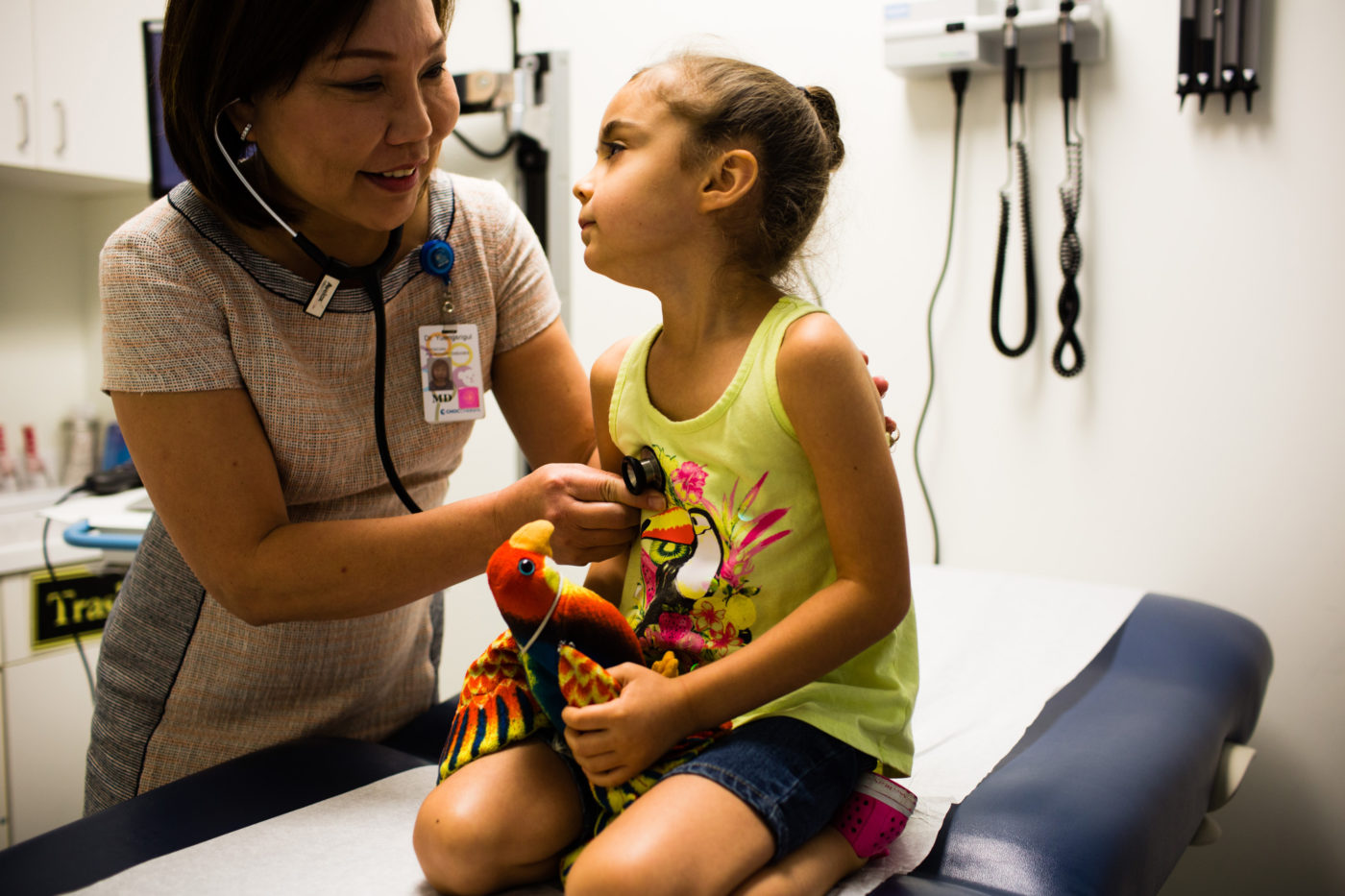In recognition of Child Life Month, we are highlighting the Cherese Mari Laulhere Child Life Department at CHOC, a critical partner to physicians and an essential part of the multidisciplinary team at CHOC ensuring the continuity of care.
We spoke to Brianne Ortiz, child life clinical educator, who shared the following ways in which physicians can better connect with their patients:
Greet the patient first
Let them know they are important to you. It’s natural to address the caregiver first, but ultimately you need the patient’s buy-in for compliance and a valued relationship with the family. After introductions, explain your job in a way that your patient understands. If you are going to listen to your patient’s lungs, show her your stethoscope first. Let the child touch it and have her practice taking big deep breaths. Listen to the caregiver’s lungs first and then tell the child it is time to listen to her lungs. Always tell a child what you are going to do before you approach the patient. Language and delivery is powerful and giving basic and honest information in a non-threatening manner goes a long way.
Do your homework
Patients will be more cooperative and trusting if you find something in common with them. Ask non-medical questions to find out what makes them happy. Be in touch with what various age groups enjoy right now (Mickey Mouse Clubhouse, Minecraft, the Lego Batman movie, Snapchat, Spotify, Taylor Swift and Shawn Mendes, for example). If your patient is more reserved, remember that communication is multifaceted; patients may warm up to you based on your facial expressions, tone of voice, if you’re eye level with them, if you’re friendly and keep them in involved in the exam or check-up. You may not even speak the same language as your patient, but all children understand the language of play. At the end of your appointment, take notes about what your patient enjoys, so when you see them again you have something to talk about and they’ll feel special because you remembered what is unique to them!

Offer choices and utilize positioning for comfort
Even young children have preferences and like to feel included. When you are checking a patient’s tympanic temperature, ask the patient which ear she prefers. The power to choose provides feelings of control and autonomy and allows the child to anticipate what is ahead. Positioning for comfort helps children feel more secure and less vulnerable. Sitting in an upright position is always more desirable than lying down. If a child needs help holding still, ask the caregiver to assist the child during an invasive procedure. If a patient can sit on her mother’s lap during an IV start, the child will have positive support from a person she trusts rather than a negative restraint from a stranger. A sense of dignity and respect is earned when patients feel more comfortable and less helpless.
Let your professional guard down
Take off your doctor cap for a few minutes and tell a silly joke, help build a Lego car, make pizza out of Play-Doh or have a lunchtime dance party. This will foster a safe place for families and make you more approachable. Your clinical expertise will be apparent by the medical treatment you provide; however, being relatable and understanding will convey a human connection.
Less is more
Unfamiliar faces can be intimidating, so only allow for medical personnel who are absolutely necessary in the patient’s room during an exam. If an invasive procedure is scheduled, designate one person who has a calm tone of voice to speak to the patient. Several people speaking and giving directions at the same time may feel chaotic and can cause more anxiety for the child. Having age appropriate distraction items available can also help decrease anxiety. If you have a toddler who is afraid of the blood pressure cuff, ask her caregiver to blow bubbles while staff obtains her blood pressure. Nursery rhymes, counting and interactive toys with sounds and lights, work well for distracting young children. I Spy books, cell phone apps, belly breathing and conversation are better ways to engage older children during stressful situations.
Learn more about the child life experts and services at CHOC.




